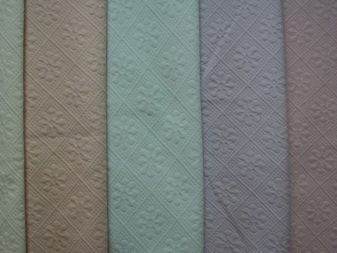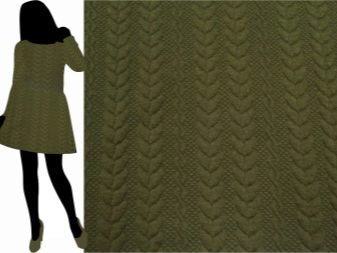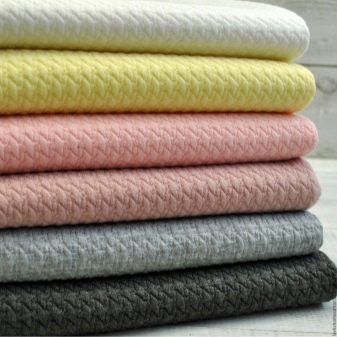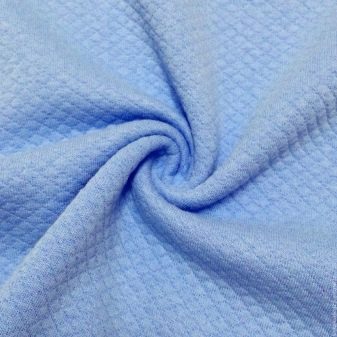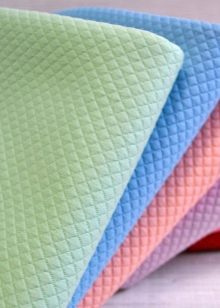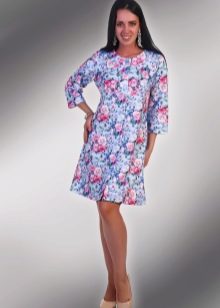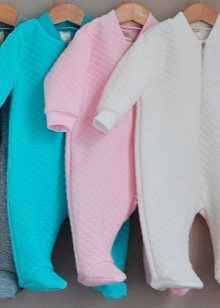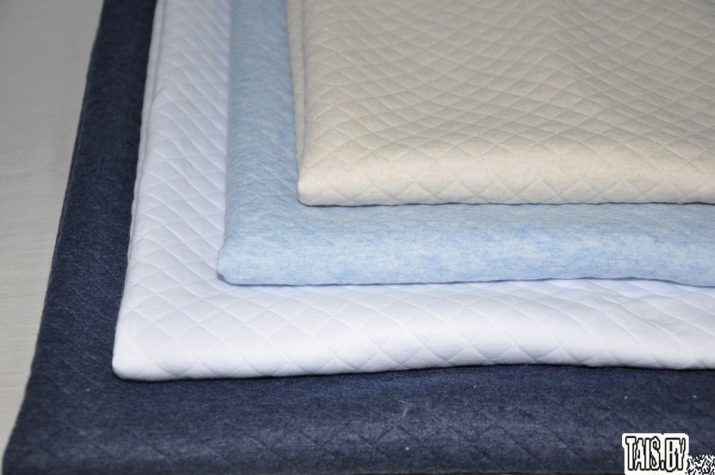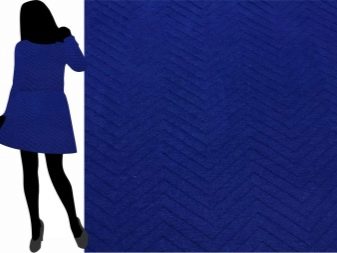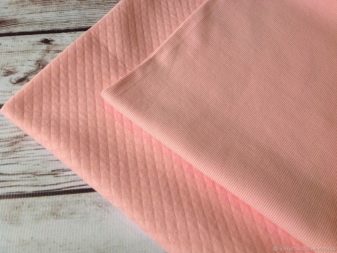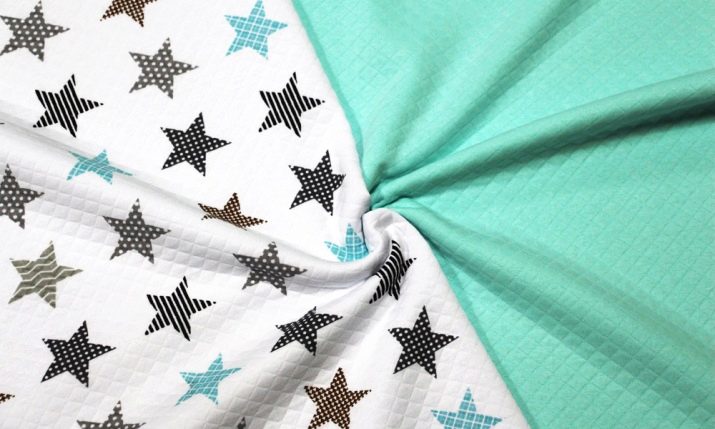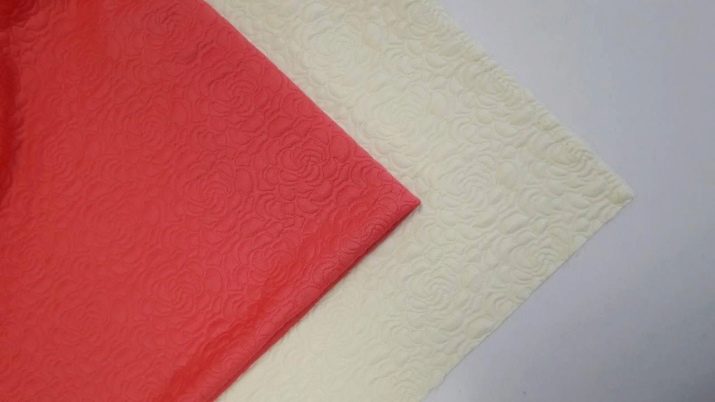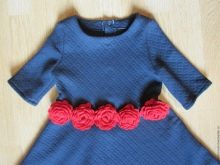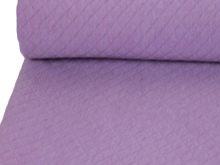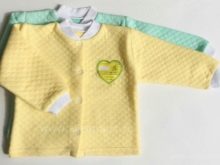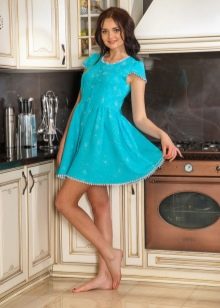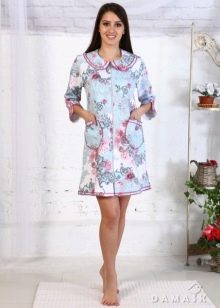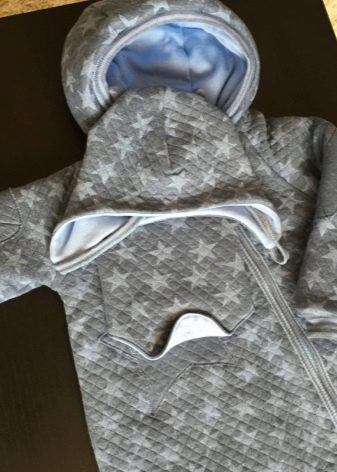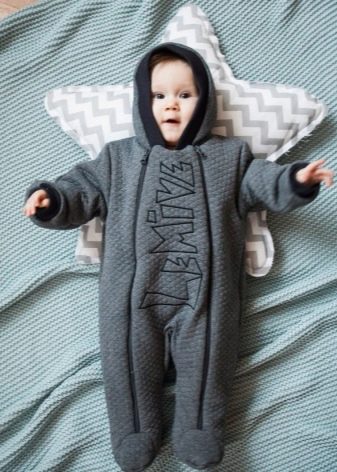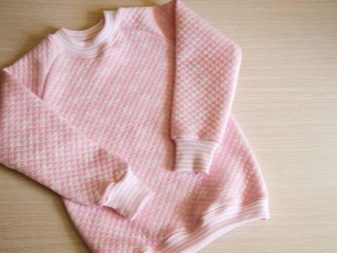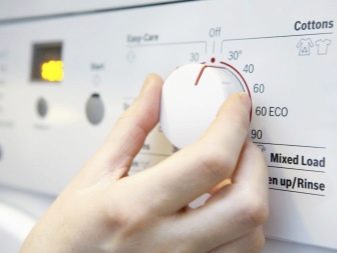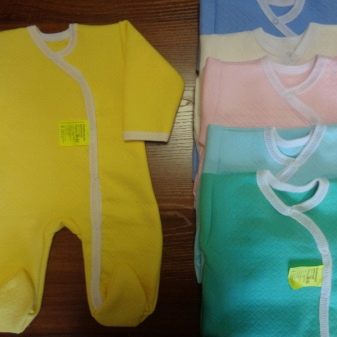Capitonium: what is this fabric, its composition and properties
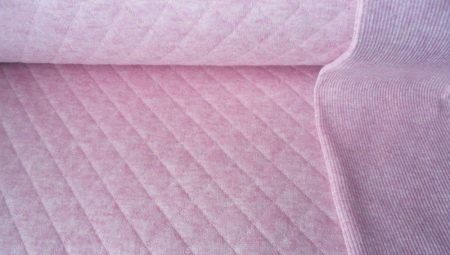
Despite the individual tastes, each of us wants to look neat, clean and at the same time attractive, solid. The modern fabric market provides us with this opportunity: the shelves in stores are full of fabrics of the most skillful tailoring, patterns and colorings. This article presents a description of capitonium - one of the most common, convenient and practical types of fabric.
What it is?
The word capitone, which came from French, which means the carriage-tie method, has acquired many names and titles in modern society. In addition to the classic and traditional "capitonium", you can often find such names as: capitone, capiton, capitonium. In fact, knitwear of this type is a natural cotton fabric. The technology of making such a canvas is in the formation of stitches on the canvas, invisible through modern technologies of sewing.
Properties
Many people appreciate capitonium not so much for a pleasant looking appearance, but for its unique properties. It should be understood that these functions relate to a full canvas.
- The very first property is strength, and therefore durability. Due to the special technology of tailoring and the density of 220–300 g / m2, capitonium can withstand heavy loads, is well resistant to washing and has a flexible fiber structure that does not allow it to crumple.
- The second property, also important in its own way, is comfort. Unlike some natural materials, capitonium is originally a tender, soft and pleasant structure. This option of knitwear is considered to be insulated, and therefore it is often used for sewing cloths that are used to make home clothes and things for young children.
- Persistence is the next plus. Special tailoring of this knitwear not only protects the material from premature erasure, but also keeps the color of the fabric and its structure for a long time. The density of sewing capitonium is such that the fabric does not shrink after washing and does not lose its positive properties.
- Versatility - generalized plus for all natural fabrics. Capitonium has excellent breathability and absorbs moisture. That is why this material is often used in the manufacture of towels, bathrobes, certain types of clothing for everyday life and sports.
- Easy to care. Unique tailoring makes the care of this type of knitwear a very easy task: the fabric does not wrinkle, respectively, does not require frequent ironing. As for washing, capitonium is not particularly picky and adequately responds to all standard washing modes.
- Manifold. Sewing features of capitonium allow embodying any ideas of the authors So, the clothes from this knitwear are distinguished by a wide variety of patterns, colors and patterns. With all this, the initial density of the material is not lost due to reliable sewing technology. Due to the slightly matte color of the canvas, the fabrics of capitonium, even of different colors, are perfectly combined with each other.
However, despite the fact that various synthetic fibers are being actively introduced into this material, which make it more flexible and suitable for wide use, the initial capitonium has one not very pleasant property - the complete absence of elasticity in the structure.
Although again, do not forget that with the addition of a large amount of synthetics to the basis of capitonium fibers, the value of the canvas falls exponentially.
Varieties
Almost all cotton knitted fabrics can be divided into three types. In short, the separation is based on the composition of the canvas, quality and appearance (structure, weaving, pattern). Some types of capitonium are widely known.
- Singing The most expensive and at the same time the highest quality type of capononia. He has several advantages at once: 100% cotton content, due to the high quality of the material, the latter is absolutely not wrinkled, has a smooth and even glistening surface and “immunity” to rapid contamination. The basis for the production of this type is a long-staple, high-quality processed cotton.
- Carda (some also call this kind of "rint"). Still high-quality canvas, but not so expensive, and with a clear content of synthetic fibers at the base of the canvas. The appearance of the card is almost no different from singing, but professionals immediately distinguish it by a less smooth and brilliant texture.
- O. E. (or OpenEnd) - the last and most common due to its cheap appearance. This is explained by the composition (the main ones are the remains of raw materials from the production of types more expensive, as well as residual, short fibers of cotton) and the appearance (the outer side is cotton material, the inner one is polyester-type fabric). It is easy to distinguish this fabric: there is no place for natural shine, the surface of the canvas will be pale, slightly matte. Often, the surface of such a material is covered with multiple fibers. This fabric is still considered natural, but not the most comfortable and durable.
Also distinguish caponium in density. Single-layer capiton consists of two knitted fabrics with a thin layer of insulation between them. In this case, the material is invisibly fastened with stitches that form the shape of squares or rhombuses. In the two-layer capiton, one more layer of warming material was added, as well as another layer of knitted material.
Composition
Singing is 100% cotton. In this case, cotton fiber is used as insulation.
The card is less radical and accepts up to 80% of cotton; the rest of the material is synthetic fibers of a synthetic winterizer or polyester. The outer layers of fabric in this type of canvas are usually made natural; an intermediate level or layer level is left to the polyester fibers.
The following artificial and synthetic fibers are considered to be the most common variants for the production of O. E. species: polyester, viscose, elastane (lycra is used in rare cases). Due to this composition, capitonium is sold at very tempting prices, however, in fact, the original composition of the canvas in this case is lost.
And it should be understood that the synthetic layer disrupts the natural circulation of air, therefore, it is extremely not recommended to buy clothes from knitwear of this type (especially for clothes for children).
Where does it apply?
Surely, many of you get acquainted with such a concept as capitonium for the first time. This is not surprising: now the market is so flexible and diverse that you don’t especially pay attention to the material or its composition - convenience and a pleasant price are more important. But where is capitonium used today? You will be surprised, but you meet products from this knitwear every day.
- Products for everyday life and recreation. This includes a wide variety of fabric products: sweaters, sweatshirts and hoodies, trowels, vests, bathrobes, bedding, bedding, bedspreads and towels.
- The beautiful and brilliant texture of capitonium made it an ideal material. for sewing weekend items: beautiful skirts, pullovers, sweaters, even full dresses. Frequent use of knitwear capononia in the manufacture of clothing business type.
- Specialized clothing from capitonium - ideal for sports. As it was already written above, caponium perfectly absorbs moisture and passes air.When the content of the optimal amount of synthetic fibers in the base of capitonium, it becomes sufficiently elastic for use in active sports.
- Kapitoniy - ideal option for tailoring for children and newborns. Warm, dense, hypoallergenic (due to natural fibers) fabric used in the tailoring of children's sweaters, T-shirts, pants, envelopes and overalls. If you intend to choose clothes specifically for such needs, we strongly advise you to familiarize yourself with the percentage of synthetics and cotton in clothing models. For children's skin materials types of card and O. E. may be contraindicated.
- Knitwear caponium is often used as additional heating in the clothes for the cool season. Capiton lining additionally protects outerwear from blowing through and retains heat inside. In addition, such linings look beautiful and practical.
- Often this canvas is also used. for upholstery household furniture: material is durable, soft and retains heat well. Usually, this fabric is covered with rare sofas, sometimes - wardrobes and armchairs.
Care instructions
Kapitoniy, like almost any knitwear, does not need special conditions of care, but a number of simple requirements still worth complying with.
- Wash temperature. Cotton jersey is resistant to high temperatures, but the optimum value will be up to 40 degrees. The reason why caponium is limited to such a temperature is simple: an intermediate material or insulation may not be as adequate to high temperatures as cotton.
- Suitable as a gentle machine wash, and hand. Capiton's tailoring technology provides for a large load, so you can be zealous.
- Drying cloth it follows the standard pattern for all cotton knitwear: the web is straightened and placed horizontally, and it is desirable not to heat it with an iron. Usually, clothes from such a fabric dries quickly, and folds do not form on its surface even with strong wringing.
Drying of capitonium under open sunlight should be avoided. In this case, it is likely that clothing will turn prematurely pale.
Summary tips for use
Do not forget that high-quality capitonium is expensive, however, given all the useful properties of this material, it is clear that the amount spent will pay off over time. Do not neglect meticulous checks while buying clothes and materials from capitonium.
Remember:
- Caponium with a high content of synthetics will serve much less and will not be so convenient at all;
- finding out the percentage of cotton and synthetics in this type of knitwear will help you determine the optimal modes for washing, as well as decide whether a particular item of clothing or life is suitable for you;
- Today, cheap fake capononia is not uncommon, so try to carefully check the material for all the signs mentioned in the article above before buying.
We hope our advice has helped you to understand the properties of capitonium and to learn about the proper care for this unique type of knitwear.
About what capiton is, see the next video.
